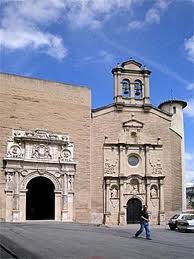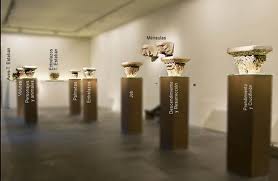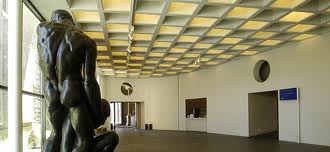Spanish Museums: Pamplona: Museum of Navarre

The Museum of Navarre (Museo de Navarra) is the most prestigious museum in the province of Pamplona in Spain. This Spanish museum is dedicated to the archaeological and artistic heritage of the Spanish region of Navarre. The museum has a very diverse and large collection of artwork dating from the Prehistoric period, through the centuries, up until the 20th Century and the present day.
History
The Museum of Navarre was founded in 1956 and is famous for its patriotic tribute to the art and archaeology of the Navarre region which is due to the fact that the museum is under the direction of the local government. It is located in the city of Pamplona, opposite the Royal Palace. The museum opened in 1956 after the old building in which the museum resides had finished being converted from its former life as a hospital.
The museum's collection of works of art and historical artefacts came to be part of the collection when the 'Comisión de Monumentos Históricos y Artísticos de Navarra' (Commission of Histoical and Artistic Monuments of Navarre), which dates back to 1860, collected works of art in order for them to be protected by the government of Navarre. Not only were the pieces of art protected and restored by the government, they were also kept safe in order to conserve the artistic heritage of the region for future generations to enjoy.
The Building
The museum is located in the old 'Hospital de Nuestra Señora de la Misericordia' (Hospital of Our Lady of Mercy) which can be found in the old quarter of the city of Pamplona. However, the only features that survive from the original building are the front doorway, which was originally built by Juan de Villareal, and the chapel on the side. These sections both date from the 16th Century.

The doorway was built in the Renaissance style of architecture and it is in fact the only example of true Renaissance architecture still surviving today if you read a Pamplona guide. The doorway is in the shape of an arch, resembling the 'arc de triomphe' in Paris, and is completed in the intricate, 'plateresco' style.
The original hospital was shut in order to move it to the Hospital of Navarre in 1932. It was in the early 1950s that the disused building began to be transformed into the museum by José Yarnoz Larrosa. In 1986, the museum underwent a remodelling process in order to modernise the building.
The chapel at the museum is considered to be one of the finest examples of Gothic-Renaissance architecture in the city of Pamplona. It was built between 1547 and 1550 by Juan de Ancheta. The doorway of the chapel, which dates from around 1733, was originally from another church but was moved in 1934 to be part of the chapel in Pamplona. Recently, the chapel has become incorporated into the museum and is now the place where you can see the collection of religious artwork from the Renaissance and Baroque periods.
In 1990, the museum underwent a complete restructuring process which included the construction of a new section designed by Jordi Garcés and Enric Soria. Consequently, the museum was re-inaugurated in the same year by the Spanish Queen, Doña Sofía.
The Collection

The Museum of Navarre has an extremely large collection of artworks and archaeological artefacts on display across the four storey building. The works are arranged in a chronological order ranging from the Prehistoric and Roman period on the 1st floor, Medieval and Renaissance art on the 2nd floor, Baroque and 19th Century art on the 3rd, to 20th Century art on the 4th and final floor.
In the museum there is a wonderful collection of Roman mosaics which came from small towns and provinces in the Navarre region. A fine example of these mosaics is the mosaic named 'El minotauro' (The Minotaur) which comes from the city of Pamplona itself.
Some of the most important works in the museum are the 'Mosaico de Teseo' (Teseo Mosaic), the 'Arqueta de Leire' (Chest of Leire), and the portrait of the Marquis of San Adrián which was painted by Franciso de Goya.
